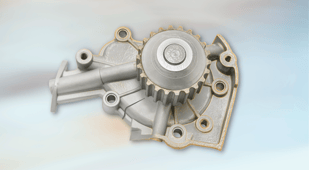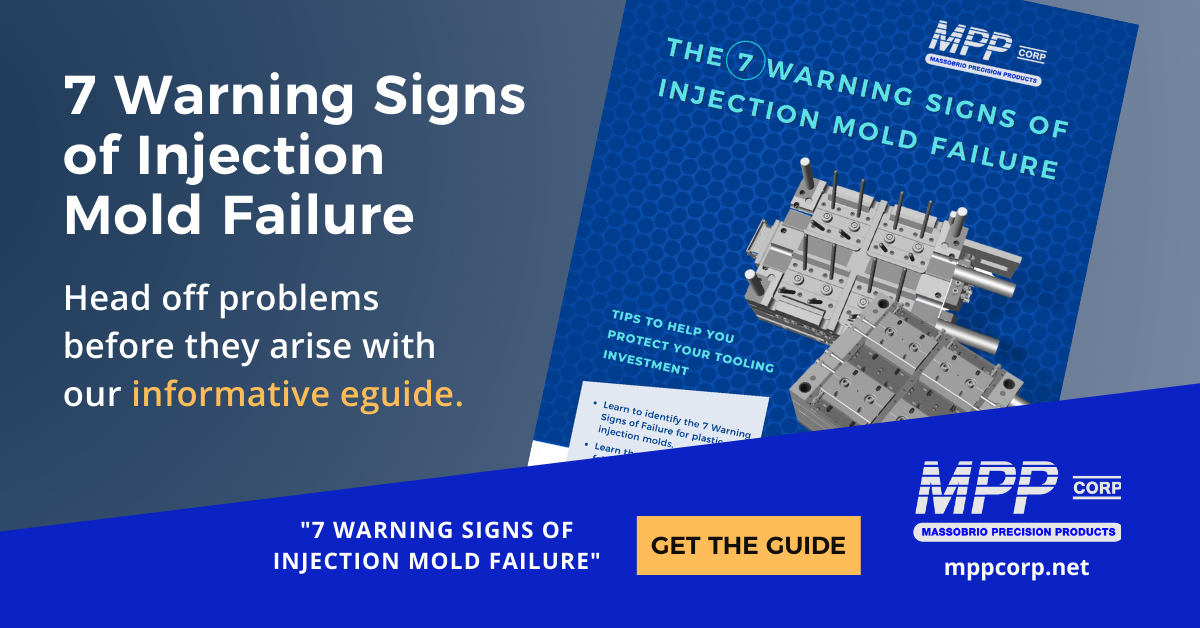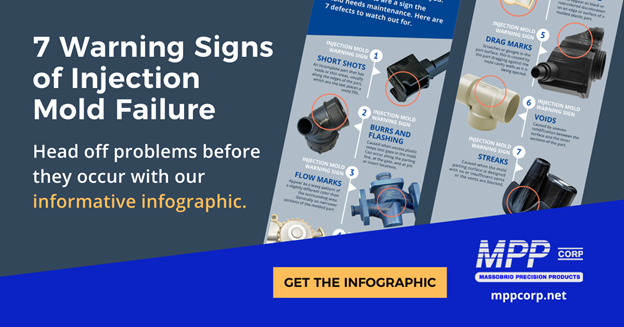You spend a lot of money on your plastic injection molds. Maintaining and repairing them can keep them running for years, providing a valuable return on your investment.
Short of a mold totally crashing, how do you know when a mold needs repair or maintenance? This article will tell you. We identify plastic part defects that can be signs of mold repair and maintenance. This article is part of a series discussing injection mold maintenance and repair.
Signs That Your Injection Mold Needs Repair or Maintenance
How do you know when a mold needs maintenance or repair? Short of a complete failure, here are the 7 tell-tale signs to look for in the parts that are produced by the mold.
- #1: Short shots where parts are ejected in an incomplete state
- #2: Burrs and flashing caused when excess plastic seeps into gaps in the mold
- #3: Flow marks caused by uneven injection speed or cooling
- #4: Blistering, stress cracks, and burn marks brought on by prolonged exposure to high temperatures
- #5: Drag marks caused by a misaligned ejector system
- #6: Voids or depressions from non-uniform heating or cooling of materials
- #7: Streaks
I this article, we discuss warning sign #4, Blistering, stress cracks, and burn marks.
Injection Mold Warning Sign #4: Blistering, Stress Cracks, Burn Marks
 Burn marks typically appear as black or rust-colored discoloration on an edge or surface of a molded plastic part. Burn marks are caused by trapped air, or the resin itself, overheating in the mold cavity during injection. Excessive injection speeds or heating of the material often lead to overheating that causes burns. Consider the following preventative measures to avoid burn marks in molded components:
Burn marks typically appear as black or rust-colored discoloration on an edge or surface of a molded plastic part. Burn marks are caused by trapped air, or the resin itself, overheating in the mold cavity during injection. Excessive injection speeds or heating of the material often lead to overheating that causes burns. Consider the following preventative measures to avoid burn marks in molded components:
- Lower the melt and mold temperature to prevent overheating
- Reduce the injection speed to limit the risk of trapping air inside the mold
- Enlarge gas vents and gates to help prevent the material from cooling too early during flow
- Shorten the mold cycle time so that any trapped air and resin don’t have a chance to overheat
Choose an Injection Mold Maintenance and Repair Partner You Can Trust
Why choose MPP? When you choose MPP, you get:
- A team of mold builders who have a combined 100+ years of mold building experience
- Expert knowledge of plastics and manufacturing processes
- In-house engineering and design services from experienced engineers
- In-house repair and maintenance from skilled mold builders, welders and machine operators
- A Quality Assurance system that meets all requirements of the ISO 9001:2008 Quality Assurance Standard
- Pickup and delivery from anywhere, anytime
- Personalized solutions
To discover how we can help you, call 810.364.2939 or contact us.



